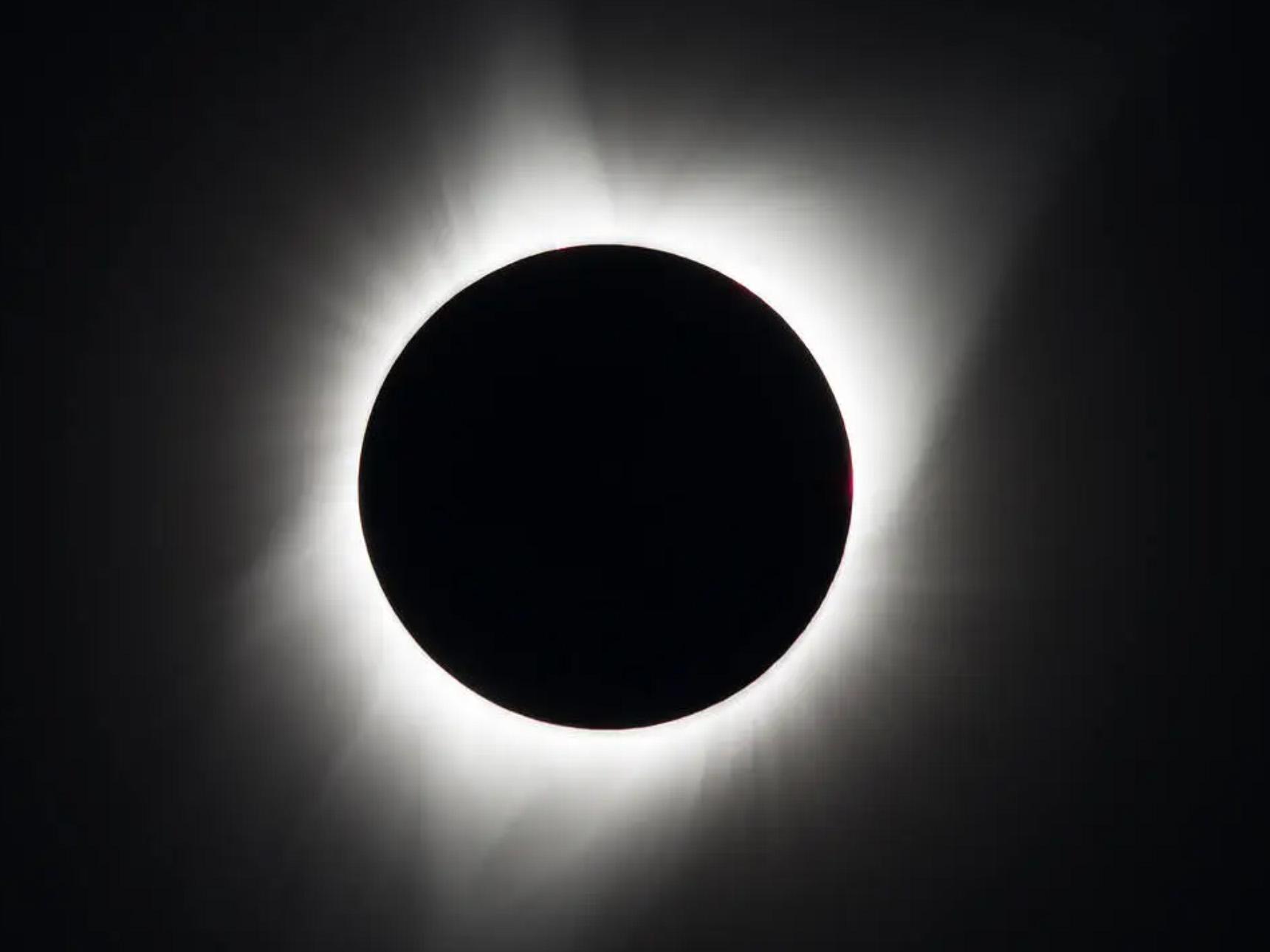Image of a total solar eclipse courtesy of NASA.
With the once-in-a-lifetime experience of being in the path of totality for a total solar eclipse on April 8, SUNY Oswego will host student research, viewing opportunities, planetarium shows, children’s activities, lectures from experts and more on its lakeside campus.
A total solar eclipse is a rare phenomenon that occurs during a new moon when the Sun, Moon, and Earth are aligned in a straight line. The Moon completely covers the Sun, blocking its light, and casting a shadow on Earth. The next total solar eclipse will take place in 2044, where the best viewing will be over Montana and North Dakota.
To better observe this occurrence, and foster interest in special programs around it, SUNY Oswego will cancel its daytime classes, or those beginning before 5 p.m.
The eclipse will begin in Oswego at 2:08 p.m., as the Moon begins to block the Sun. Over the next 73 minutes, the Moon will continue to move in front of the Sun. Totality begins at 3:21:43 and will last for 3 minutes, 30 seconds.
Anybody viewing the eclipse directly should use eclipse glasses with International Organization for Standardization (ISO) 12312-2 certification or indirect viewing options like a pinhole camera.
A campus watch party will take place from 2 to 4:30 p.m. on the north lawn outside the Marano Campus Center arena. SUNY Oswego students, faculty and staff are invited to take in the astrophysical phenomenon while enjoying make-and-take crafts, yard games, a live DJ and free T-shirts while supplies last.
Free eclipse glasses are also currently available via the Marano Campus Center box office. SUNY Oswego students, faculty and staff can receive one free pair and can pay $2 for each additional set of glasses.
Before the eclipse, the campus will host a STEM Community Day from 2 to 5 p.m. on Saturday, April 6, offering opportunities to learn from researchers and take part in family-friendly hands-on activities.
Research opportunity
A faculty-student team is a research partner in the National Eclipse Ballooning Project, supported by a grant from NASA and the National Science Foundation (NSF). Researchers will continue this work during April’s total solar eclipse, with student teams launching balloons with radiosondes into the stratosphere at regular intervals to measure atmospheric phenomena under rare conditions. A student-faculty team conducted similar research in fall 2023 in New Mexico during an annular eclipse. Meteorology and physics faculty serve as mentors on this project.
Shows in SUNY Oswego’s unique planetarium throughout the day will introduce visitors to the many fascinating aspects of the eclipse, although these shows are currently sold out. The recently upgraded planetarium provides state-of-the-art educational experiences from knowledgeable presenters.
A variety of lectures in the Shineman Center will provide educational insights from experts, including from SUNY Oswego’s faculty as well as such institutions as Yale University, the University of Glasgow and Ohio State University. The Shineman Endowed Fund supports four of these speakers
SUNY Oswego’s Physics, Chemistry, Biological Sciences and Math departments will provide a variety of outreach programs and demonstrations for visitors of all ages in the Shineman Center.
The university’s Rice Creek Field Station will host programming from 9 a.m. through the time of the eclipse, including available nature trails, children's activities, wildlife observation, use of telescopes and a relaxed setting for viewing. This programming is sold out due to high demand.
Penfield Library will host activities including pinhole viewer-making, assorted crafts, a book display and an eclipse-themed photo station.
SUNY Oswego’s Admissions Office will run a special informational program with campus tours, while inviting visitors to stay around to observe the total eclipse from the spectacular lakeside location.
The Doppler on Wheels network, run by the Center for Severe Weather, will have one of its cutting-edge mobile Doppler radar trucks on-site to collect data, work with meteorology classes and host opportunities for viewing by the public. This visit has NSF funding.
In classrooms, eclipses will help inform the Honors 300 class “Non-Western Foundations of Science” course and Astronomy 101.
In addition to its integration into science and other STEM coursework, the rare event will provide lessons for student journalists as well. A broadcast journalism course titled “Covering the Eclipse” will provide opportunities for storytellers to learn more about the science behind the eclipse and how to convey it well to a variety of audiences.
Members of the community interested in taking part in the activities should make a free reservation via the SUNY Oswego box office, which includes parking and access to most events on the main campus.
For more information, visit oswego.edu/eclipse.




